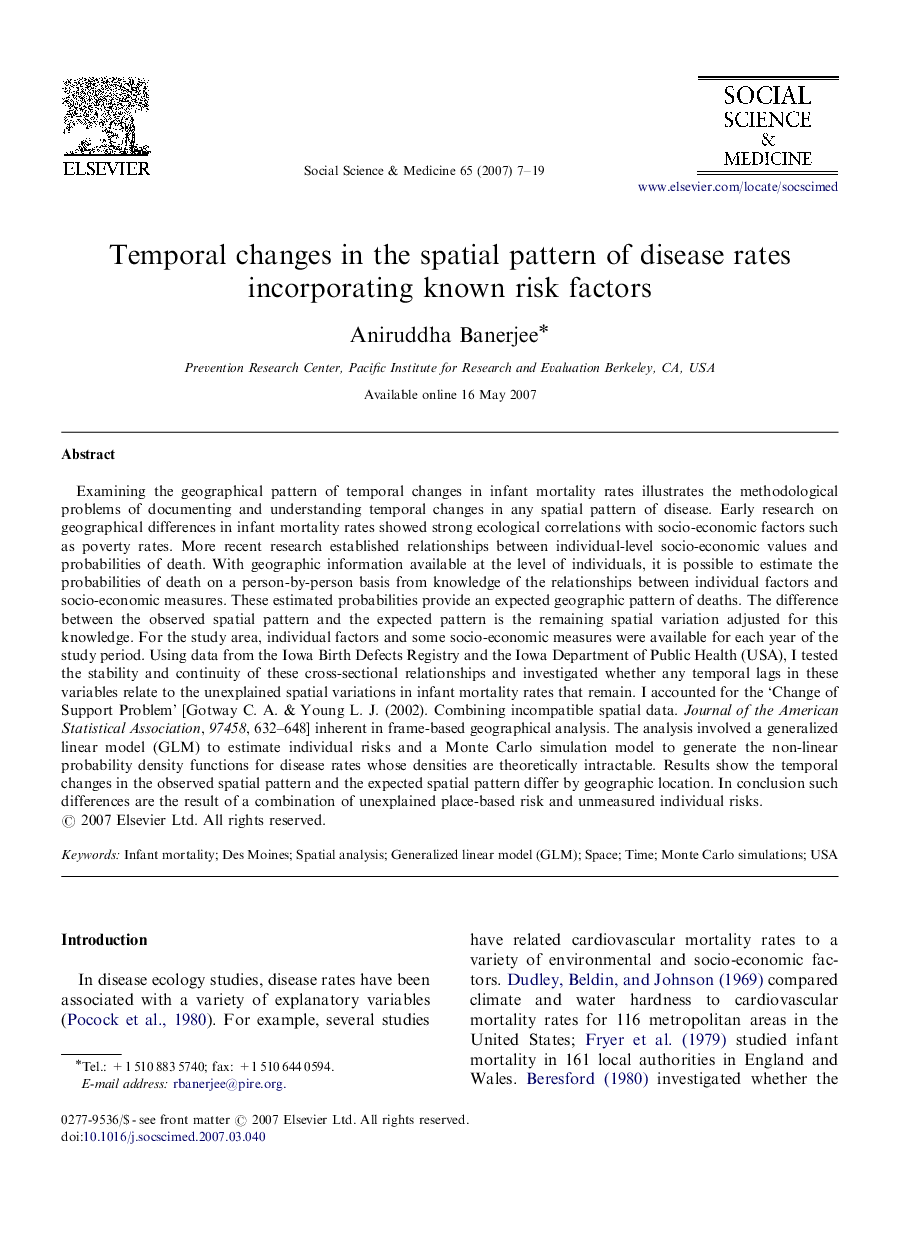| کد مقاله | کد نشریه | سال انتشار | مقاله انگلیسی | نسخه تمام متن |
|---|---|---|---|---|
| 954183 | 927630 | 2007 | 13 صفحه PDF | دانلود رایگان |

Examining the geographical pattern of temporal changes in infant mortality rates illustrates the methodological problems of documenting and understanding temporal changes in any spatial pattern of disease. Early research on geographical differences in infant mortality rates showed strong ecological correlations with socio-economic factors such as poverty rates. More recent research established relationships between individual-level socio-economic values and probabilities of death. With geographic information available at the level of individuals, it is possible to estimate the probabilities of death on a person-by-person basis from knowledge of the relationships between individual factors and socio-economic measures. These estimated probabilities provide an expected geographic pattern of deaths. The difference between the observed spatial pattern and the expected pattern is the remaining spatial variation adjusted for this knowledge. For the study area, individual factors and some socio-economic measures were available for each year of the study period. Using data from the Iowa Birth Defects Registry and the Iowa Department of Public Health (USA), I tested the stability and continuity of these cross-sectional relationships and investigated whether any temporal lags in these variables relate to the unexplained spatial variations in infant mortality rates that remain. I accounted for the ‘Change of Support Problem’ [Gotway C. A. & Young L. J. (2002). Combining incompatible spatial data. Journal of the American Statistical Association, 97458, 632–648] inherent in frame-based geographical analysis. The analysis involved a generalized linear model (GLM) to estimate individual risks and a Monte Carlo simulation model to generate the non-linear probability density functions for disease rates whose densities are theoretically intractable. Results show the temporal changes in the observed spatial pattern and the expected spatial pattern differ by geographic location. In conclusion such differences are the result of a combination of unexplained place-based risk and unmeasured individual risks.
Journal: Social Science & Medicine - Volume 65, Issue 1, July 2007, Pages 7–19